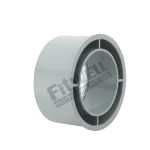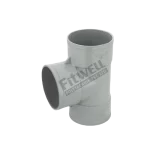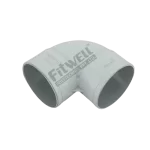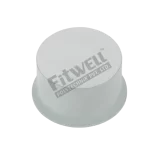The Role of Service Saddles in Efficient Plumbing Systems
Introduction
An efficient plumbing system is crucial for the smooth distribution of water, gas, or other fluids in residential, commercial, and industrial setups. While pipes and pipe fittings are often the focus of plumbing discussions, service saddles play an equally vital role in ensuring the system’s efficiency and reliability. This article dives into the role of service saddles in plumbing, explaining what they are, their importance, and how they enhance the overall efficiency of plumbing systems.
What Are Service Saddles?
Service saddles are specialized pipe fittings used to create branch connections or outlets in a main pipeline. They clamp onto the pipeline, providing a secure and leak-proof means to tap into the main line without the need for extensive pipe cutting or replacement. Typically, service saddles are used in water distribution systems, gas pipelines, and irrigation setups.
Key Features of Service Saddles:
- Secure Sealing: Designed to provide a tight seal on the pipeline, preventing leaks at the junction.
- Versatility: Suitable for use with various types of pipes, including PVC, UPVC, CPVC, MDPE, and even metal pipes.
- Durability: Constructed from robust materials that can withstand pressure and environmental factors.
Service saddles usually consist of a curved body that matches the pipe’s diameter and a sealing mechanism, such as a rubber gasket, to ensure a leak-free connection.
Importance of Service Saddles in Plumbing Systems
Service saddles are essential for the safe and efficient functioning of plumbing systems. Here’s why they are so important:
1. Simplifying Branch Connections
In large-scale plumbing systems, adding branch lines to an existing pipeline can be complex and costly. Service saddles simplify this process by allowing plumbers to tap into the main line without cutting or replacing sections of the pipe. This reduces installation time and minimizes disruptions to the system.
2. Preventing Leaks
A properly installed service saddle creates a secure, leak-proof seal on the pipeline. This is particularly crucial in systems that transport water, gas, or chemicals, where leaks can lead to significant waste, safety hazards, and environmental concerns.
3. Enhancing System Durability
By providing a stable and secure connection, service saddles enhance the durability of the plumbing system. They help distribute pressure evenly, reducing the risk of stress points and potential pipe failures. This contributes to the system’s overall longevity and reliability.
How Service Saddles Enhance Plumbing Efficiency
Service saddles play a significant role in improving the efficiency of plumbing systems in several ways:
1. Minimizing Water Loss
In water distribution systems, leaks and pressure drops can lead to considerable water loss. Service saddles ensure a tight, leak-free connection at branch lines, maintaining optimal water pressure and minimizing losses. This efficiency is especially beneficial in agricultural irrigation systems, where every drop of water counts.
2. Facilitating Easy Maintenance
With service saddles, adding or modifying branch connections becomes a straightforward task. This feature makes it easier to carry out routine maintenance, upgrades, or repairs without the need for complex pipework modifications, ultimately enhancing the system’s operational efficiency.
3. Reducing Installation Time
Since service saddles allow for branch connections without extensive pipe cutting, they significantly reduce installation time. This not only speeds up the plumbing process but also cuts down labor costs, making them a cost-effective solution for both small-scale and large-scale projects.
Materials Used in Service Saddles
The choice of materials for service saddles affects their performance, durability, and compatibility with different pipe types.
1. PVC and UPVC Service Saddles
- Benefits: Lightweight, corrosion-resistant, and suitable for water distribution and irrigation systems.
- Use Cases: Ideal for UPVC and PVC pipes in residential, agricultural, and industrial applications.
2. Ductile Iron and Stainless Steel Service Saddles
- Benefits: Extremely durable and capable of withstanding high pressures, making them suitable for heavy-duty applications like gas distribution.
- Use Cases: Commonly used for metal and high-density polyethylene (HDPE) pipes in industrial and municipal water systems.
3. Brass and Bronze Service Saddles
- Benefits: Excellent resistance to corrosion and ideal for potable water systems.
- Use Cases: Often used in underground water supply pipelines, especially where long-term durability is required.
When choosing a service saddle, it’s important to consider the compatibility of the material with the pipe type and the transported fluid.
Manufacturing Process of CPVC Piping Systems
Installation and Maintenance Tips for Service Saddles
Proper installation and maintenance of service saddles are key to ensuring their effectiveness and the plumbing system’s longevity.
Installation Tips:
- Clean the Pipe Surface: Before installing a service saddle, ensure the pipe surface is clean and free of debris for a secure fit.
- Correct Positioning: Position the saddle on the pipe where the branch connection is required. Ensure it is aligned properly to avoid stress on the pipe.
- Tighten Evenly: When tightening the saddle, use a wrench to apply even pressure to prevent warping and ensure a leak-proof seal.
Maintenance Tips:
- Regular Inspections: Periodically inspect service saddles for signs of wear, corrosion, or leaks, especially in systems that handle high pressure or harsh chemicals.
- Replace Worn Gaskets: Check the rubber gaskets for signs of deterioration and replace them if necessary to maintain a tight seal.
Conclusion
Service saddles are a critical component of efficient plumbing systems, providing a secure and reliable way to create branch connections in pipelines. Their ability to prevent leaks, reduce installation time, and enhance system durability makes them an essential addition to any plumbing setup. By choosing the right material, ensuring proper installation, and conducting regular maintenance, you can maximize the efficiency and lifespan of your plumbing system.
Stay on the forefront of industry trends by checking out our latest content
Stay ahead with our latest content, designed to keep you informed on the newest industry trends and insights. Discover valuable updates that help you lead in your field.

Trusted uPVC Pipes Manufacturers for India’s Top Contractors
Introduction: The Surge in Demand for uPVC Pipes Among Top Contractors in India The construction and infrastructure sectors in India have witnessed a significant transition toward sustainable and long-lasting materials.
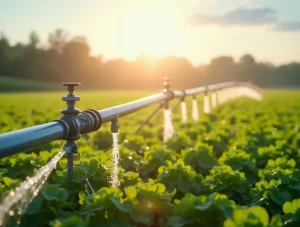
Top Innovations in Agricultural Pipe Fittings for Water Savings [2025]
Introduction to Agricultural Pipe Fittings and Water Sustainability Agricultural pipe fittings play a pivotal role in building efficient irrigation systems, crucial for modern farming practices. By exploring the versatility of

Expeart Tips from MDPE Pipe Fittings Manufacturers to Avoid Failures
Expeart Tips from MDPE Pipe Fittings Manufacturers to Avoid Failures Understanding MDPE Pipe Fittings: An Overview MDPE (Medium Density Polyethylene) fittings, used extensively in gas and water systems, offer strong,
Request a Free Consultation
Get personalized plumbing solutions with a free consultation from Fitwell.

